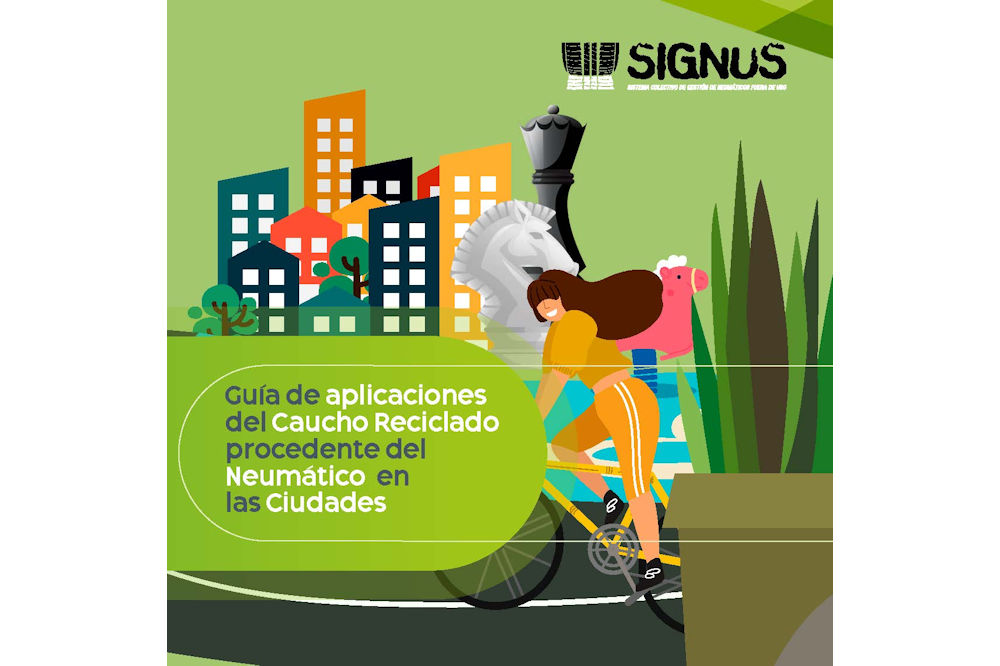SIGNUS presents the use of recycled rubber from tyres in applications in urban as a sustainable and profitable alternative
SIGNUS has published “Guía de aplicaciones del Caucho Reciclado procedente del Neumático en las Ciudades”(Guide to the use of recycled tyres in urban environments) to explain the different uses that involve recycled tyre materials in urban areas (pavements, urban furniture, etc.).
This guide, directed primarily at local authorities, is intended to provide a tool to help complete the Circular Economy compromise in cities and to respond to the need to incorporate environmental criteria into public procurement, which will enable to the administrations, in the development of their activity, shaping and contributing to economic and environmental sustainability objectives.
Recycled rubber is a material that presents numerous opportunities, for example, absorption of impacts, vibrations and noise, durability due to its high resistance to any climatic condition, etc. Due to this quality, the tyre, once recycled, plays an important role in the transformation of our cities due to many applications such as: safety pavements, sports surfaces (athletics tracks, tracks multisports, floors of gymnasiums, football pitches), asphalted streets, urban pavements (bicycles lanes, jogging tracks, recreation areas in schools, transit squares, etc.), noise reduction in the metro or rail system, parking lots, urban furniture (benches, garden benches, etc.), urban ornamentation (roundabouts, sculptures and games, vertical gardens).
The use of recycled rubber to manufacture products destined for urban areas is suggested as one of the most durable solutions within tyre recycling at the end of its useful life. The SIGNUS Guide recognises the characteristics and advantages of this material, as well as concrete solutions and graphic examples that contribute to the principles of the Circular Economy to reduce the consumption of primarily virgin materials.


















